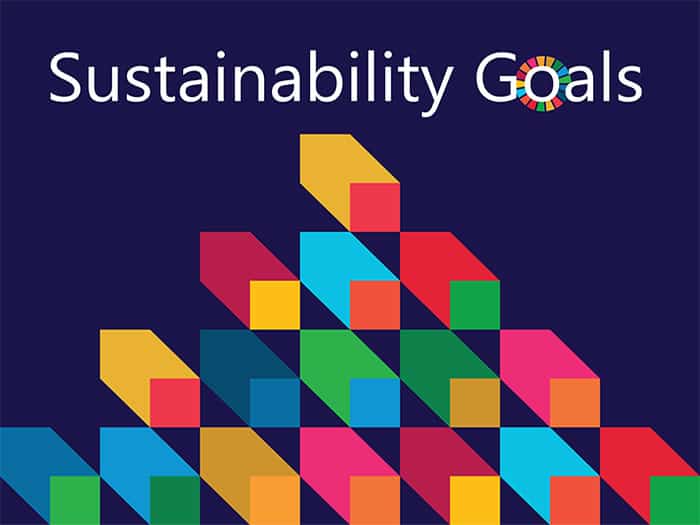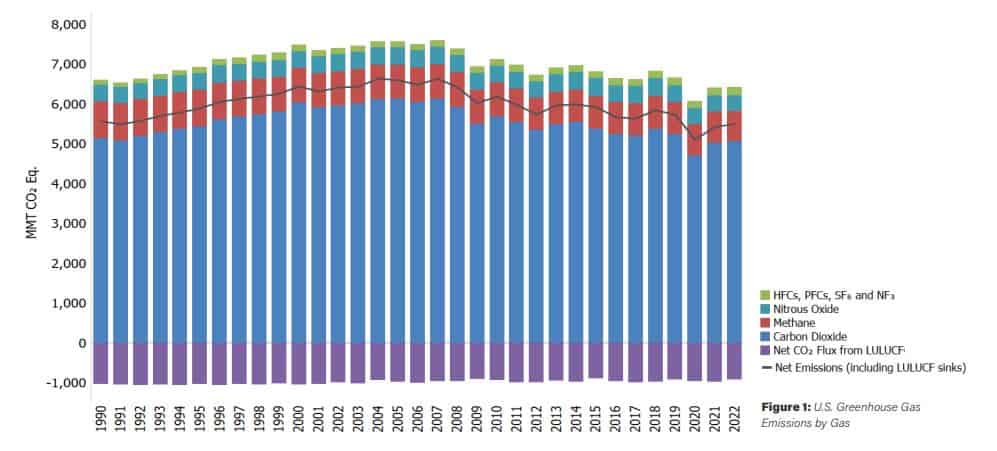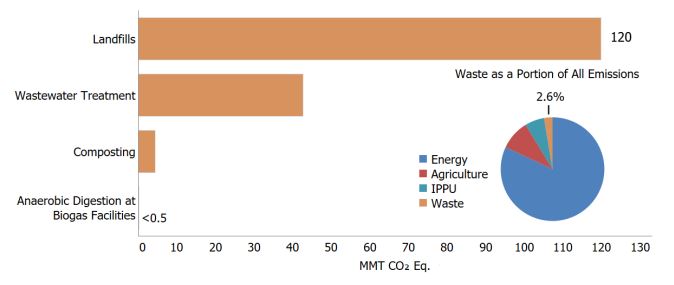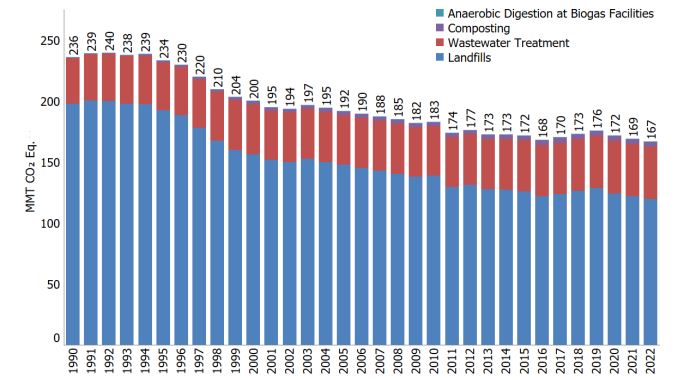

Join SCS Engineers at the Federation of New York Solid Waste Conference with Trade Show, hosted at the luxurious Sagamore Resort in Bolton’s Landing, New York. The 2024 program will put a spotlight on responding to climate change (with topics such as renewable natural gas and electric vehicles) and also feature per- and polyfluoroalkyl substances (PFAS) contamination as a focus area. Attendees can look forward to two and a half days of presentations by industry thought leaders, over 75 technical sessions, an educational trade show, and exciting recreational activities. This event is renowned in the industry for its unique networking opportunities, such as horseback riding, tennis, golf, fishing, and hiking tours.
Don’t miss out! Register today for this exciting event!
Join SCS Engineers at the SWANA SC Spring Conference, hosted at the Hilton DoubleTree in Myrtle Beach, South Carolina. SCS’s own J Morgan, PE, SWANA SC Palmetto Chapter President, and the planning committee prepared an engaging agenda of technical sessions, including PFAS analytical methods, landfills and earthquakes, and environmental justice. Attendees will enjoy the annual spring golf outing, held at the Aero Club Short Course, and fun networking opportunities during Casino Night.
SCS experts are expected to present this year, with more details to come!
Registration is open to SWANA Members and non-members. Register today!
Join SCS Engineers at the Tennessee Environmental Network Show of the South (TENSOS)
We are excited to announce that SCS will be participating as sponsors, exhibitors, and speakers at the upcoming Tennessee Environmental Network Show of the South (TENSOS), taking place from May 14-16 at the Chattanooga Convention Center in Tennessee.
TENSOS is the largest, most comprehensive, and diverse professional environmental education opportunity in Tennessee. This conference brings together experts and enthusiasts from various fields to discuss and promote environmental sustainability.
We are proud to share that Victoria Williams and Joy Stephens will be presenting on Corporate Climate Disclosures on Friday, May 16th at 9:30 am.
We look forward to seeing you there! Register today!
Join SCS Experts at the 2024 Joint Solid Waste and Recycling Conference, hosted by the Virginia Recycling Association (VRA) and SWANA Old Dominion Chapter, May 14-16, at the Norfolk Marriott Waterside in Norfolk, Virginia. This year’s conference offers live learning and networking opportunities for industry professionals, with more than 40 presentations and 250 attendees. It also features a highly anticipated golf tournament, trail bike rides, industry tours, a welcome reception on the USS Wisconsin battleship, and a Young Professionals event at the Staff Hill Market Bar in Norfolk’s Waterside district.
SCS is proud to be a gold sponsor and exhibitor for this two-day event, which will bring together leaders and organizations across the solid waste and recycling industries.
SCS Experts are excited to present and lead panel discussions on the following topics this year.
Landfill Leachate Pretreatment Processes, Strategies, & Challenges
Presenter: Robert Dick, PE, Director of Mid-Atlantic Solid Waste Practice
Site Assessment for Glass Recycling Collection
Presenter: Joshua Krumski, GISP
Air Permitting in Virginia in 2024 – Panel Discussion: RNG Plants, Leachate Evaporators, Title V Permits, and More
Panel Leaders: Lucas Nachman, Victoria Essex, PE and Grace Wohlford, EIT
The U.S. Environmental Protection Agency (EPA) Region 9 and the CA Department of Toxic Substances Control’s (DTSC) Office of Brownfields in collaboration with the Center for Creative Land Recycling will host the California Land Recycling Conference (CALRC): From the Ground Up, this September 17-19 at the Carson Event Center in Carson, CA. Come visit SCS Engineers, an exhibitor and sponsor at this leading Conference. CALRC is the premier event for community, municipal, and redevelopment professionals focused on the beneficial reuse of underutilized and contaminated properties. With unprecedented resources to address brownfield cleanup and reuse challenges, CALRC provides the tools, training, and connections you need to create and capitalize on opportunities for revitalization. This conference will spotlight the passion driving redevelopment projects, showcase the partnerships created, and help practitioners gain valuable insights into available funding opportunities that support these transformative programs. SCS can provide support for a variety of land use and brownfield redevelopment services, including:
Stack and Sequence: Building a Capital Matrix for Brownfield Redevelopment Funding
Brownfield Process & Funding
1:45 PM – 3:45 PM
Community Hall BC
Every brownfield project requires multiple sources of capital to be successful and the more difficult the project, the more capital sources are needed. This workshop will identify and describe a wide variety of brownfield capital sources that will range from brownfield-specific funding to traditional redevelopment financing. A deeper dive will show how sources can be integrated and stacked, used sequentially for the various stages of redevelopment, and combined with private investment. This workshop offers more than just a list of capital sources: in the first half of the workshop capital sources will be described and presented in a “generic” matrix showing the stack and sequence possibilities. Then in the second half of the workshop we’ll collectively work through a few stack and sequence project scenarios to demonstrate the wide range of possibilities for brownfield redevelopment funding/financing programs. The workshop will accommodate individual sites as well as broad areas, and both urban and rural scenarios. Public agencies and non-profits will benefit by learning how to best promote redevelopment through utilizing multiple capital sources. Additionally, practitioners will gain insights, tools, and strategies for working with developers and investors and cultivating successful public-private partnerships that support communities’ neighborhood revitalization goals. All participants will come away with a greater understanding of the wide variety of brownfield redevelopment capital sources and will have the opportunity to create their own plan.
Speakers
West Sacramento 20 Years Later – A Vision Becomes Reality
Brownfield Process & Funding
10:45 AM – 11:45 AM
Community Hall BC
For over 20 years, West Sacramento has been a prime example of actively preparing and implementing a Redevelopment Plan for various City Districts. From Master Plan to Redevelopment Transition Plan to Plan execution, West Sacramento has been at the forefront of Brownfields Redevelopment, using a variety of Financing and Funding resources, including EPA Assessment and Multi-purpose Grants, Tax Increment Financing (TIF), as well as public-private partnerships to help transform a once-overlooked City along the Sacramento River into a highly desirable place to live, work and visit. The session will describe the City’s visioning, financing and funding, assessment, and revitalization process used to transform key target areas such as Pioneer Bluff, Stone Lock and the Capitol Avenue Districts. West Sacramento is a prime example of Brownfields Redevelopment planning and execution. Examples of this transformation are evident across the City (Pioneer Bluff deindustrialization, Stone Lock rehabilitation, and affordable housing developments in the Capitol Avenue District). Attendees will gain a better understanding of full scope redevelopment projects from visioning to execution, the creative financing and partnership building needed to effect such a transformation, and the inspiring story that is West Sacramento. This session is intended for all CCLR CALRC attendees and will cover visioning, financing and funding, regulatory agency collaboration, environmental considerations, and stakeholder consensus building. Attendees will also view a GIS-based Story Map which graphically captures the West Sacramento transformation, past, present, and future.
Speakers
Find out more information about this Conference or to register!
We are excited to announce that SCS Engineers will be sponsoring and exhibiting at the Center for Creative Land Recycling (CCLR) Arizona Brownfield Workshops this April 23rd, 24th, and 25th in collaboration with the Environmental Protection Agency (EPA). Our very own Iain Olness will be a panelist and Eric Williams will moderate a panel. Similar content will be presented at all workshops, so choose the date and location most convenient to you! SCS can provide support for a variety of land use and brownfield redevelopment services, including:
Register now for any or all of these workshops!

On April 11, 2024, the U.S. Environmental Protection Agency (EPA) released its annual Inventory of U.S. Greenhouse Gas Emissions and Sinks (GHG Inventory), presenting a national-level overview of annual greenhouse gas emissions from 1990 to 2022.
The GHG inventory identifies and quantifies anthropogenic sources and sinks of greenhouse gas emissions and removals, which is essential for quantifying and qualifying data used to address climate change and measure the impact of environmental solutions and sustainability plans. In this context, the term “anthropogenic” refers to greenhouse gas emissions and removals that are a direct result of human activities or are the result of natural processes that have been affected by human activities.
The GHG Inventory covers seven key greenhouse gases: carbon dioxide, methane, nitrous oxide, hydrofluorocarbons, perfluorocarbons, sulfur hexafluoride, and nitrogen trifluoride. In addition to tracking U.S. greenhouse gas emissions, the Inventory calculates carbon dioxide removed from the atmosphere through carbon uptake in forests and other vegetation.

Greenhouse gases are emitted and reported across five economic sectors: transportation, electric power (electricity generation), residential/commercial (homes and businesses), industry, and agriculture. Emissions from commercial/residential and industrial activities account for a much larger share of U.S. greenhouse gas due to their proportionately larger share of electricity use in these sectors (e.g., heating, ventilation, and air conditioning; lighting; appliances; powering industrial machinery).

Transportation activities were the largest source (28 percent) of total U.S. greenhouse gas emissions in 2022. From 1990 to 2022, transportation CO2 emissions from fossil fuel combustion increased by 19 percent, largely due to increased travel demand.
The electric power sector accounted for 25 percent of U.S. greenhouse gas emissions in 2022. Emissions from this sector have decreased by approximately 16 percent since 1990, and the carbon intensity of the sector, in terms of emissions (CO2 Eq.) per QBtu input, has decreased by 28 percent. Total electric power generation increased by 3 percent in 2022, while electric power-related emissions decreased by less than 1 percent due in part to a decrease in coal consumed to produce electricity and an increase in renewable generation.
The commercial and residential sectors accounted for 7 and 6 percent, respectively, of total U.S. greenhouse gas emissions in 2022, excluding indirect emissions from electricity end-use. Emissions from these sectors are primarily from building-related activities such as heating and cooking and have increased since 1990. Emissions from commercial and residential buildings also increase substantially when emissions from electricity end-use are included because the building sector uses 75 percent of the electricity generated in the U.S. for heating, ventilation, air conditioning, lighting, and appliances (NREL 2023). Total residential and commercial greenhouse gas emissions, including direct and indirect emissions, have decreased by 1 percent since 1990.
The industrial sector accounted for 23 percent of U.S. greenhouse gas emissions in 2022, excluding indirect emissions from electricity end-use. If indirect emissions from electricity use are distributed to the industrial end-use sector (e.g., powering equipment and industrial buildings), industrial activities account for 30 percent of U.S. greenhouse gas emissions. Since 1990, emissions from industry have declined by 16 percent. Shifts in industrial output away from energy-intensive manufacturing products to less energy-intensive products have had a significant positive impact on industrial emissions.
Agriculture accounted for about 10 percent of U.S. greenhouse gas emissions in 2022 and includes sources such as livestock enteric fermentation and manure management, N2O emitted from managed agricultural soils from fertilizers and other management practices, and fossil fuel combustion from agricultural equipment. Indirect emissions from electricity in the agricultural sector are about 5 percent of sector emissions. In 2022, agricultural soil management was the largest source of N2O emissions, and enteric fermentation was the largest source of CH4 emissions in the U.S. There are several strategies for reducing CH4 emissions from enteric fermentation and manure management, including anaerobic digestion and liquid-solid separation, which the sector is embracing.
A summary of greenhouse gas emissions from the Waste sub-sector is below. In 2022, waste activities generated emissions of 166.9 MMT CO2 Eq., or 2.6 percent of total U.S. greenhouse gas emissions.


Methane generation and emissions from landfills are a function of several factors. Each landfill has unique characteristics, but emissions from MSW landfills accounted for approximately 84 percent of total landfill emissions (100.9 MMT CO2 Eq.), while industrial waste landfills accounted for the remainder (18.9 MMT CO2 Eq.). Nationally, there are significantly fewer industrial waste landfills than MSW landfills, contributing to the lower national estimate of CH4 emissions for industrial waste landfills.
The annual amount of MSW generated and disposed of in MSW landfills varies annually and depends on several factors (e.g., the economy, consumer patterns, recycling, composting programs, and inclusion in a garbage collection service).
The estimated annual quantity of waste placed in MSW landfills increased by 10 percent from approximately 205 MMT in 1990 to 226 MMT in 2000, then decreased by 11 percent to 202 MMT in 2010, and then increased by 7 percent to approximately 217 MMT in 2022.
Emissions decreased between 1990 and 2022 largely because of increased use of landfill gas collection and control systems, closure of older landfills, better management practices, and increased organics diversion through state and local policy and regulations.
Biogas, Anaerobic Digestion, Renewable Natural Gas and Energy Systems
Carbon Sequestration & Deep Well Injection
CCR and Electric Utilities
Clean Air Act
Facility Energy Management
Greenhouse Gas Monitoring, Control, Inventory
Landfill Gas and LFGE
Liquids Management – Wastewater and Leachate
Material Recovery Facilities and Transfer Stations
Oil and Gas Exploration and Production
Organics Management, Composting
SCS Remote Monitoring and Control® (Emissions Tracking)
SCSeTools® (LFG Tracking)
Solid Waste Planning, Sustainable Materials Management
Sustainable Solutions Planning
Join SCS experts at the SWANA NJ Spring Conference, hosted at the Golden Nugget Casino and Hotel in Atlantic City, New Jersey. SCS is a proud exhibitor at an event dedicated to bringing together leaders and organizations from across the solid waste and recycling industries for a two-day opportunity to share information, discuss current challenges, and spur ideas for the future. Attendees will have the opportunity to meet with industry peers and learn important updates on issues affecting the solid waste industry.
Register today to catch up with SCS experts Eric Peterson, PE, and Scott Schoffner!
The Pennsylvania Independent Oil & Gas Association (PIOGA) is hosting its 2024 Spring Meeting at Rivers Casino in Pittsburg, Pennsylvania. This year’s event theme, “Climate, Commodities, and Chaos: Threats to a Strong U.S. Energy Game Plan,” will explore topics concerning changes in the oil and gas industry, including regulatory updates, consumer preferences, and market sentiment. The agenda features an oil and gas producers’ roundtable on navigating risks in energy development, regulatory updates, and a post-meeting cocktail reception where attendees and exhibitors can network with each other.
Registration is open to PIOGA members and non-members, with special pricing for students.
The 10th annual NYS Organics Summit is happening at the Hyatt Regency Buffalo Hotel and Conference Center in Buffalo, NY. This year’s event will be hybrid, offering in-person and virtual access. The NYS Organics Summit is an opportunity to connect with more than 200 materials management professionals to share success stories, learn about emerging issues, develop networks and partnerships, and discuss creative solutions to help advance sustainable organics management across New York State. The event’s program includes presentations, panel discussions, networking, and workshops. A student poster showcase will be hosted on Wednesday, April 17th and separate tickets are available for those interested in touring the NOCO Forestry’s Buffalo River Compost Facility and Generate Upcycle’s anaerobic digester.
The event is open to NYSAR3 members and non-members, with special pricing for students. Register today!